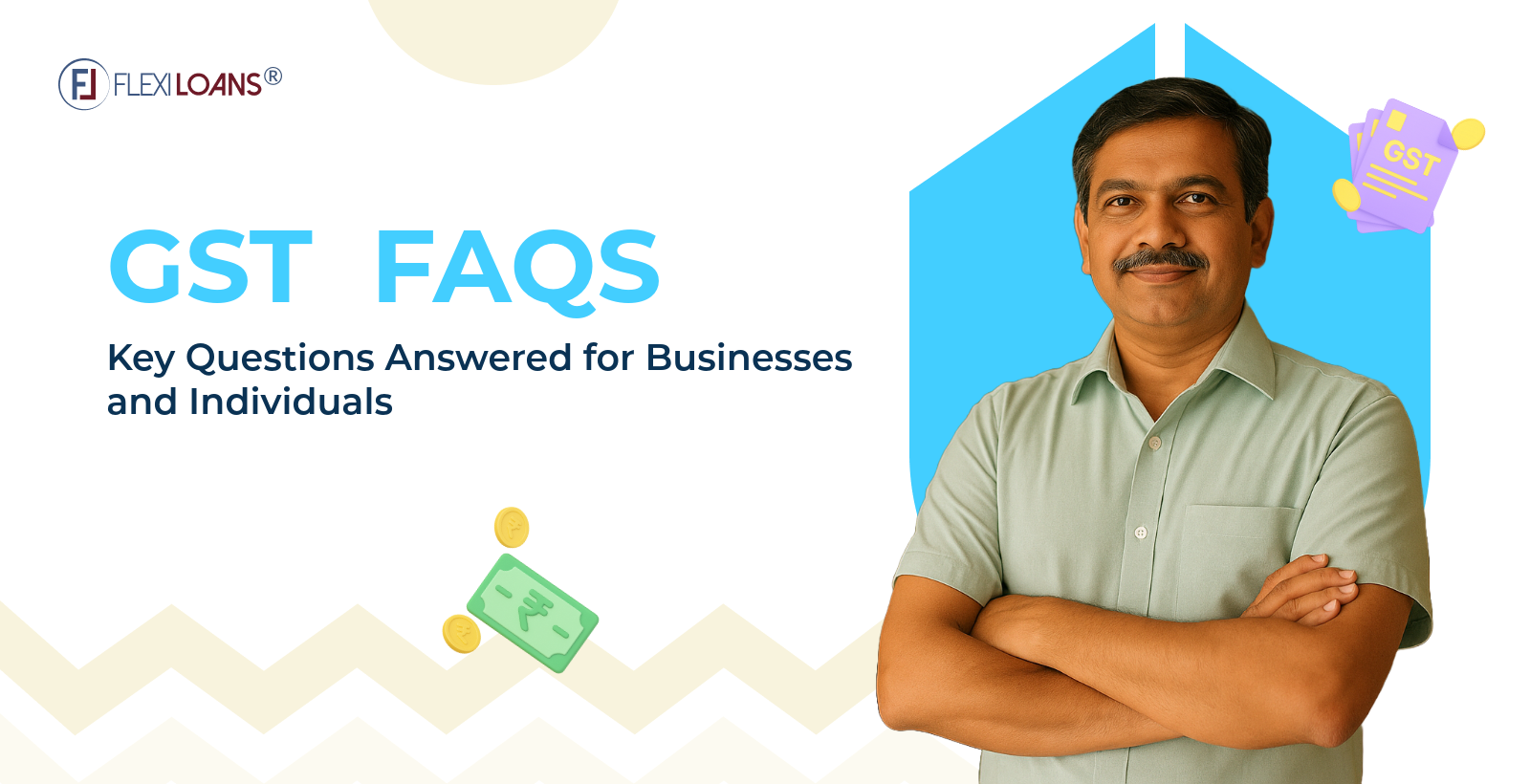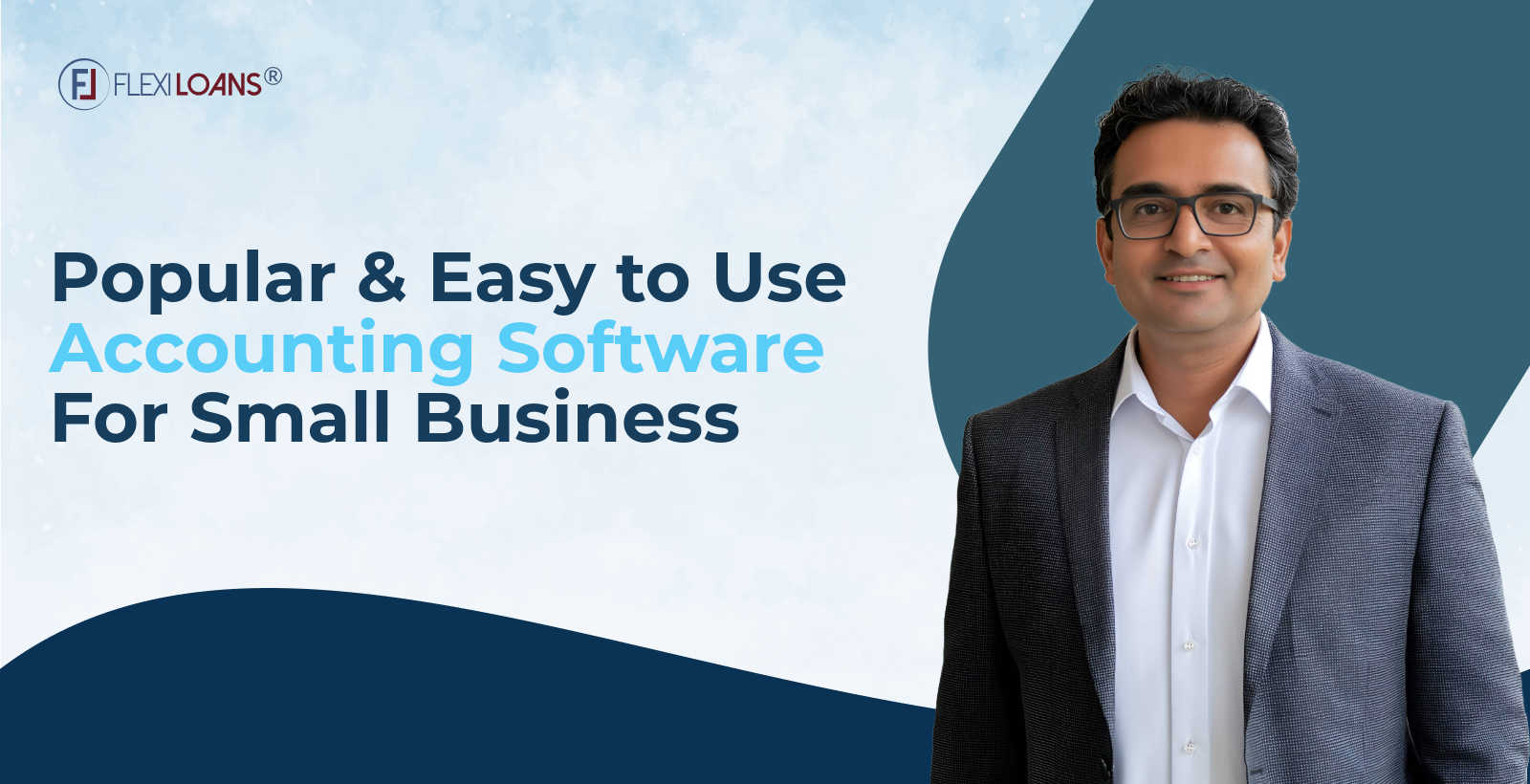May 22, 2025
Jul 24, 2025

Goods and Services Tax or GST is a part of your everyday life, whether you are a salaried individual or a business owner. Whether you are buying a packet of biscuits or running a kirana store itself, you pay GST on everything you buy and sell. GST is an indirect tax that is charged when you buy goods or services.
While most business owners struggle with when to file tax returns, others wonder how to claim input tax credit. So, we have curated a simple GST FAQs guide, covering the fundamentals of GST for small businesses. It explains the rules clearly and helps small business owners avoid common mistakes.
GST and Its Relevance to All Indian Businesses
GST in India was introduced on 1 July 2017 with the objective of simplifying the tax system. Earlier, the tax system included different types of old taxes like VAT, excise duty, and service tax. Today, you don’t need to pay several taxes to different government departments.
Being an MSME owner, you just need to follow one system, i.e. GST. It helps reduce confusion and makes it easier to do business across the country. As per the 2024 Statista reports, over 1.4 crore entities in India are registered under GST, highlighting its importance in both big and small businesses.
As important as small businesses are for the economy, many business owners are unaware of the fundamentals of GST. This lack of knowledge creates confusion about its purpose, use, benefits and working.
General FAQs on GST
Being a small business owner, you should be aware of GST basics. Here are the most general GST FAQs that answer your questions and clear confusion:
Q. 1. What is GST, and why was it introduced?
Ans: GST is a type of indirect tax applied to the sale of goods (products) and services across India. In 2000, a group of experts called the Kelkar Task Force suggested that India should have one simple tax system for the whole country. At the time, there were many different taxes in different states, including VAT, excise duty, service tax, etc.
All these taxes made it confusing and difficult for businesses. The aim of GST is to replace all these taxes with a single tax that would make it easier for businesses to pay taxes, reduce extra costs, and help the country’s economy grow by making trade between states smoother.
Q. 2. What are the different types of GST (CGST, SGST, IGST, UGST)?
Ans: There are four applicable GST types in India imposed on different goods/services in India.
- CGST (Central GST): Central government levies on on intra-state sales.
- SGST (State GST): State governments levies on intra-state sales.
- IGST (Integrated GST): Central government levies on inter-state sales.
- UTGST (Union Territory GST): Levied by the union territory governments on intra-union territory sales.
Q. 3. Who needs to register for GST?
Ans: In India, businesses must register for GST if their annual turnover crosses ₹40 lakh for goods and ₹20 lakh for services. Some special category states like Arunachal Pradesh, Manipur, and Sikkim have different limits: ₹20 lakh for goods and ₹10 lakh for services.
Some businesses in India are compulsorily charged GST irrespective of their turnover. These businesses include interstate suppliers, e-commerce operators, casual taxpayers, input tax service providers and foreign entities supplying goods/services.
Q. 4. Is GST mandatory for freelancers or service providers?
Ans: Yes, GST applicability prevails for freelancers in India. They must register for GST if their annual income exceeds ₹20 lakh. For those in special category states like Arunachal Pradesh, Manipur, and Sikkim, the threshold is ₹10 lakh. Additionally, if you provide services to clients in other states, GST registration is mandatory regardless of your income.
GST Registration FAQs
Here are the general GST FAQs on registration for a clear understanding of the process:
Q. 1. How to Register for GST Online?
Ans: To register for GST online, you need to follow the steps below:
- Visit the official GST portal at www.gst.gov.in.
- Click on ‘Services’ > ‘Registration’ > ‘New Registration’ on the portal.
- Fill in the required details to receive a Temporary Reference Number (TRN) in your registered mobile number.
- Use this TRN to complete the application by providing business information and uploading necessary documents.
- Once submit the GST registration application, you’ll receive an Application Reference Number (ARN) to track your application status.
Q. 2. What Documents Are Required for the GST Registration Process?
Ans: GST registration documents generally include:
- PAN Card
- Adhaar Card
- Your photograph
- Business address proof
- Bank account details
Q. 3. How Much Time Does It Take to Get a GSTIN?
Ans: Once you apply with all correct details and documents, it typically takes between 3-7 working days to receive your GST Identification Number (GSTIN). The duration can vary, as it depends on how accurate your information is and the verification process.
Q. 4. Is There a Fee for GST Registration?
Ans: No, you don’t have to pay anything to register for GST through the official GST portal. However, if you choose to hire professionals or consultants to assist with the registration process, they may charge a commission.
Q. 5. Can I cancel or renew GST registration?
Ans: Yes, you can cancel your GST registration if your business is closing or if you’re no longer liable to pay GST. To cancel your GST registration:
- Log in to the GST portal
- Navigate to ‘Services’
- ‘Registration’
- ‘Application for Cancellation of Registration’, and follow the directions.
And, if you want to renew some details, go to the Amendment of Registration following “Registration” on the portal.
GST Return Filing FAQs
Here is a short overview of questions related to GST FAQs return filings:
Q. 1. What is a GST Return and Who Needs to File It?
Ans: A GST return is a document that registered businesses must file. The document outlines their sales, purchases, tax collected on sales (output tax), and tax paid on purchases (input tax). Every registered business, including freelancers and service providers, is required to file a GST return filing regularly.
Q. 2. What are GSTR-1, GSTR-3B, and GSTR-9?
Ans: Here are the details of GSTR filings:
- GSTR-1: A monthly or quarterly return that captures details of outward supplies (sales).
- GSTR-3B: A monthly summary return where taxpayers report consolidated details of sales, purchases, and tax liabilities.
- GSTR-9: An annual return summarising the financial year’s transactions, including details from GSTR-1 and GSTR-3B.
Q. 3. What Happens if I Miss the Filing Deadline?
Ans: When you miss the GST return filing deadline, you will have to pay late penalties.
- ₹50 per day (₹25 each for CGST and SGST) for returns with tax liability
- ₹20 per day (₹10 each for CGST and SGST) for nil returns.
- The maximum late fee is capped at ₹5,000.
Q. 4. Can I File GST Returns Myself, or Do I Need a CA?
Ans: Yes, you can file GST returns yourself through the official GST portal (www.gst.gov.in). If you feel puzzled, you can choose FlexiLoans, which will guide you to file your returns smoothly.
Input Tax Credit (ITC) FAQs
You can understand GST input tax credit basics with the following FAQs:
Q. 1. What is Input Tax Credit (ITC)?
Ans: GST input tax credit allows businesses in India to reduce their tax liability by claiming credit for the GST paid on purchases used for business purposes. This ensures that tax is levied only on the value addition at each stage, preventing the cascading effect of taxes.
Q. 2. Who is Eligible to Claim ITC?
Ans: Any GST-registered person can claim ITC if:
- They possess a valid tax invoice or debit note.
- They have received the goods or services.
- The supplier has paid the GST to the government.
- They have filed the necessary GST returns.
Q. 3. How to Claim ITC in GST Returns?
Ans: The ITC claim procedure in GST returns can be done by following these steps:
- Verify the details of eligible ITC in Form GSTR-2 B.
- Report the ITC in Form GSTR-3B while filing monthly returns.
- Ensure reconciliation between purchase records and GSTR-2B to avoid discrepancies.
Q. 4. What are Blocked Credits?
Ans: Blocked credits refer to certain inputs and services on which ITC cannot be claimed, as specified under Section 17(5) of the CGST Act. Examples of blocked credits include:
- Motor vehicles for personal use.
- Food and beverages, outdoor catering.
- Beauty treatments, health services.
- Goods or services used for personal consumption.
GST on Small Business and MSMEs
Here are the answers addressing questions about GST for small businesses and MSMEs in India:
Q. 1. What is the Composition Scheme under GST?
Ans: The Composition Scheme is designed for small taxpayers with turnover up to ₹1.5 crore (₹75 lakh for special category states). It allows them to pay GST at a fixed rate (1% for traders/manufacturers, 5% for restaurants, and 6% for service providers) and file quarterly returns, simplifying compliance.
Q. 2. What are the Benefits of Registering under GST for MSMEs?
Ans: GST for MSMEs offers a range of advantages. GST offers a unified tax system by reducing the burden of managing various state and central levies. GST registration also allows MSMEs to avail themselves of the Input Tax Credit (ITC). Mechanism effectively reduces the overall cost of goods and services, enhancing competitiveness.
Moreover, MSMEs with a turnover up to ₹1.5 crore can opt for the GST Composition Scheme. It allows them to pay tax at a reduced rate with less strict compliance requirements.
Q. 3. Can I Apply for a Business Loan Without a GST Number?
Ans: There may or may not be a connection between GST and small business loans. You can obtain a business loan without a GST number, especially if your turnover is below the mandatory registration threshold. But when you have a GST registration, it enhances your eligibility for business loans as many lenders consider it a sign of business credibility and compliance.







